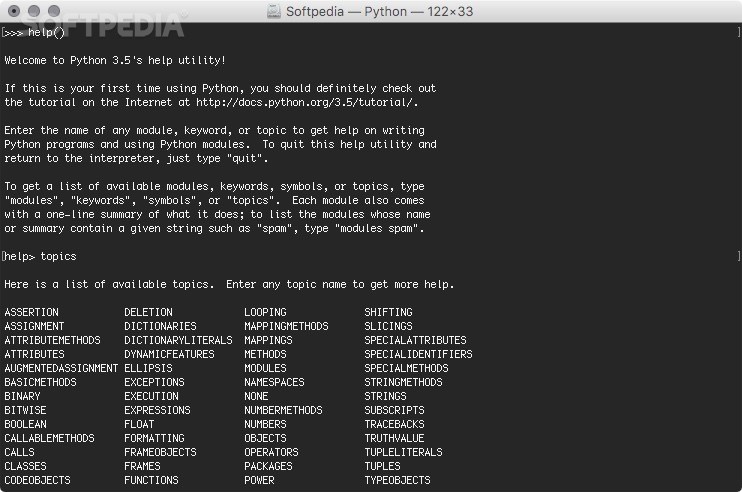
The built-in interpreter of the standalone version doesn't currently support installing packages beyond the common scientific libraries bundled with it, so most users will want to have an external Python environment to run their own code, like with any other IDE.Īlso, the standalone installers don't yet work with third-party plugins, so users needing them should use Spyder through a Conda-based distribution instead.įor a detailed guide to this and the other different ways to obtain Spyder, refer to our full installation instructions, and check out our release page for links to all our installers. Being an interpreted language means it has an elegant syntax and dynamic typing.

Python is such a powerful programming language known for its easy of use. Python 3.11 is the most recent release at the time of updating this article. You can also try out Spyder right in your web browser by launching it on Binder. Both Python 2.7 and Python 3.6 reached EOL and this requires Python developers to upgrade to newer releases of Python. We offer standalone installers on Windows and macOS, and as our Linux installer is are still experimental, we currently recommend the cross-platform Anaconda distribution for that operating system, which includes Spyder and many other useful packages for scientific Python. Python 3.6 se incluye en el repositorio universitario de Ubuntu 16.10 y Ubuntu 17.

Want to join the community of scientists, engineers and analysts all around the world using Spyder?Ĭlick the button below to download the suggested installer for your platform. Instalando Python 3.6 en Ubuntu 16.10, Ubuntu 17.04 desde el repositorio universal.


 0 kommentar(er)
0 kommentar(er)
